I’ve been buying Oasis brand fruit juices for Olivia’s breakfast for years now.
There are two variants in the shelf at Sobeys, one labeled 100% and one labeled 60%.
Reasoning that something that’s all-juice is healthier than something that’s only 60% juice, I’ve always bought the 100%.
But.
It turns out that the percentages are about different things.
The 100% is “100% juice” while the 60% is “60% less sugar.”
Neither have added sugar. Both are “all juice” but for the first ingredient in the 60% being water (and not, as I’d imagined, Lucky Charms or lard).
And the 60% has less than half the calories, and the same vitamin C.
So now I buy the 60%.
Two months to the day earlier than last year, I got my bicycle out of the basement, pumped up the tires, and got out on the road. It was glorious.
My ride was short, to MacQueen’s for a tune up (now is the time! no wait!). But the bike isn’t going back into the basement. Game on!
Archdeacon John Clarke at St. Paul’s is one of my favourite writers. While the way it manifests is different, we share a fundamental belief system. I like what he had to say about God this week:
Sometimes we need the comfort of a mother hen and sometimes a judge or an immovable mountain. Sometimes we need the rest found in a gentle breeze and it’s a clear path that helps the most. Either way, the Church shouldn’t limit our use of metaphors, similes and images for God. And, of course we shouldn’t limit our use either. By using masculine and feminine images for God, as well as other ones, we deepen our understanding of God and the potential of human beings.
Gallant’s is one of my favourite local businesses, and they’ve a staff of go-above-and-beyond people. Great work for someone who wants to work in a happy, cooperative kitchen.
L’s child L (yes, the initializing is going to get confusing) celebrated their 11th birthday last week, and my gift was a tiny handwritten, hand-bound book of advice. 11 pieces of advice to get them from age 11 to age 22. L1 took photos of the pages of the book and posted them to Facebook; I’m posting them here for posterity, and so L2 can visit ruk.ca/advice when needing a refresher. Or, for that matter, so I can visit for advice, as I’ve found it equally useful when applied to my own life, most especially pages 3, 6, and 10 of late.
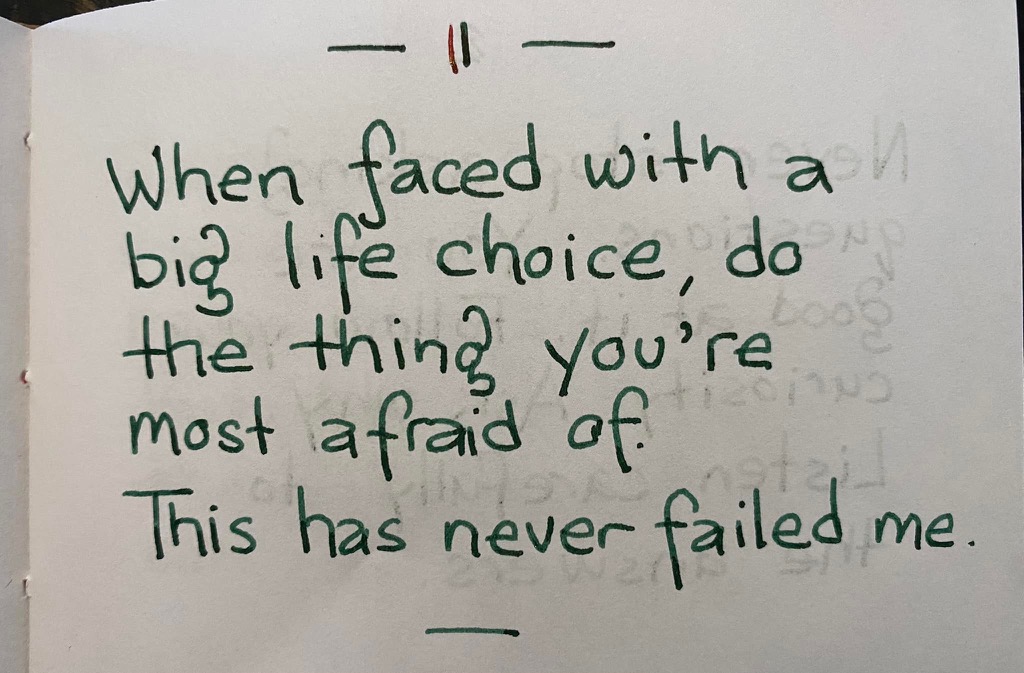
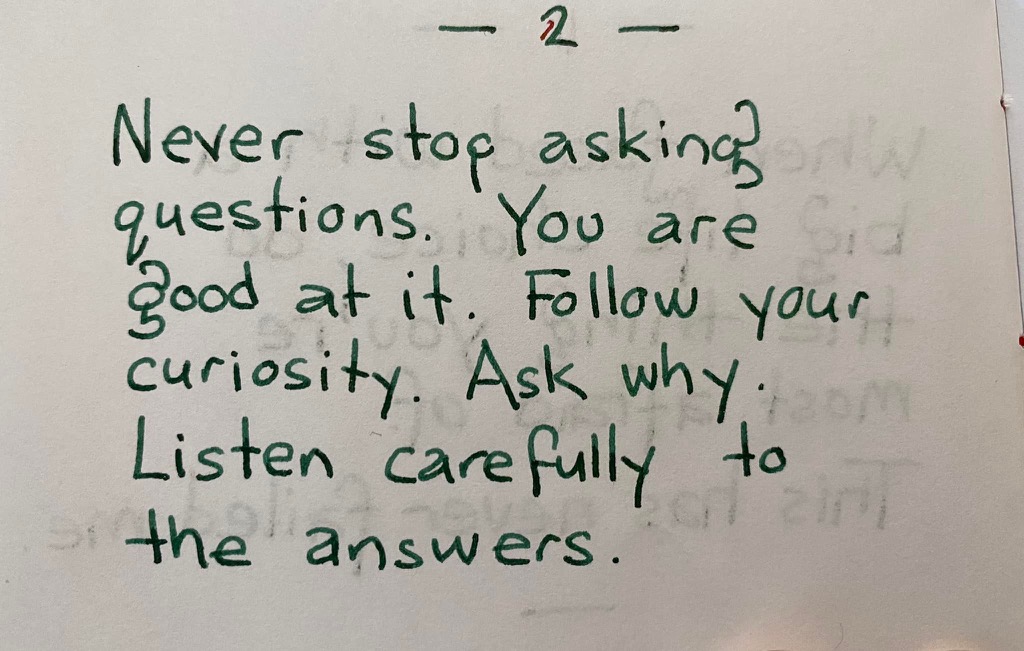
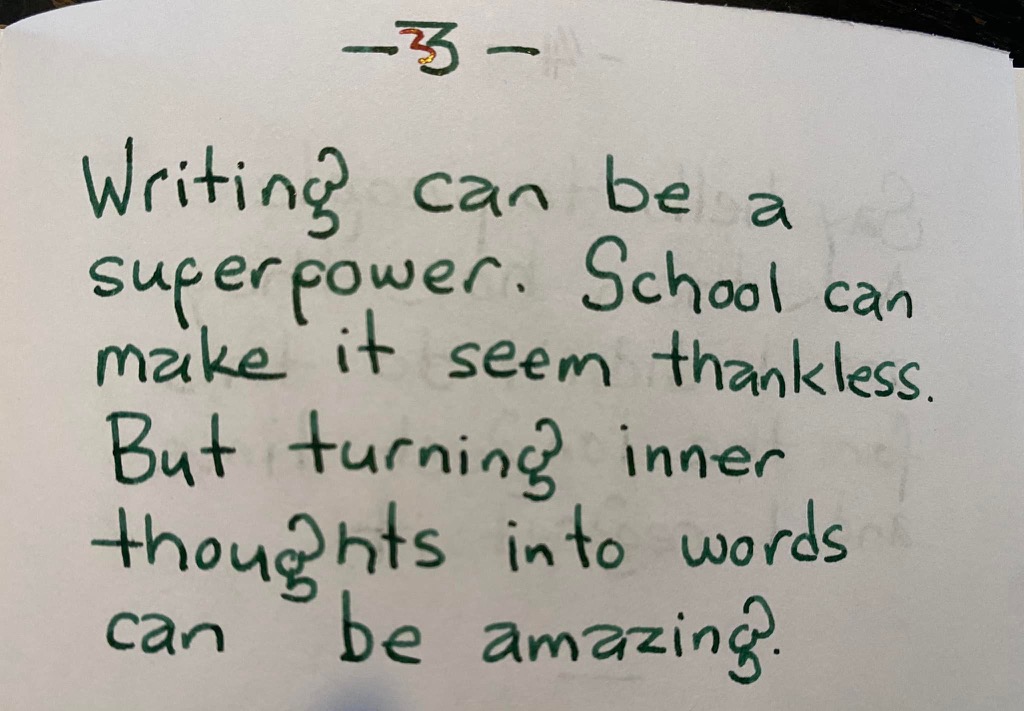
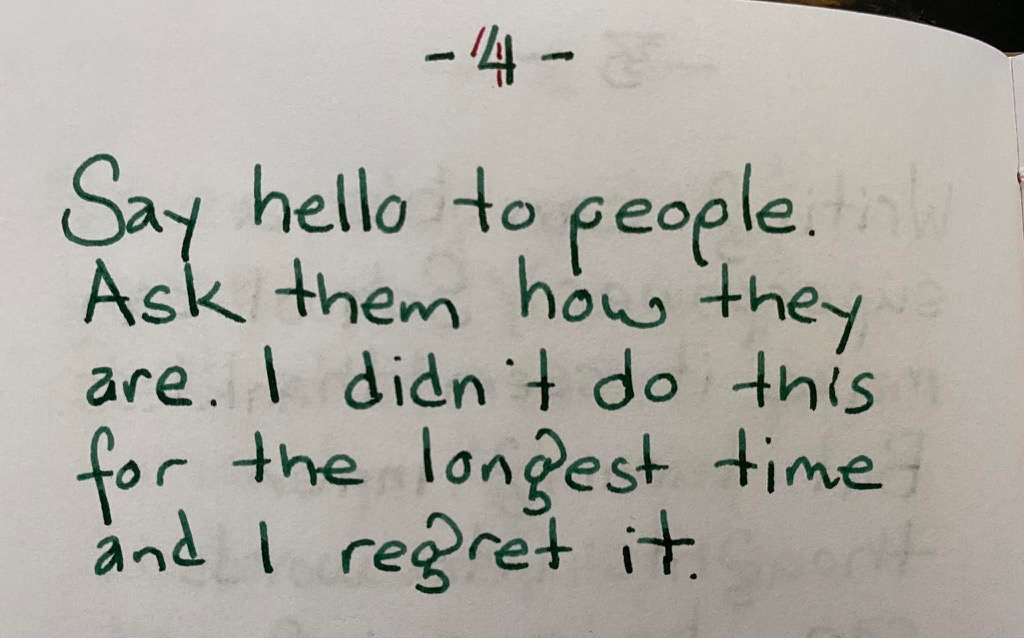
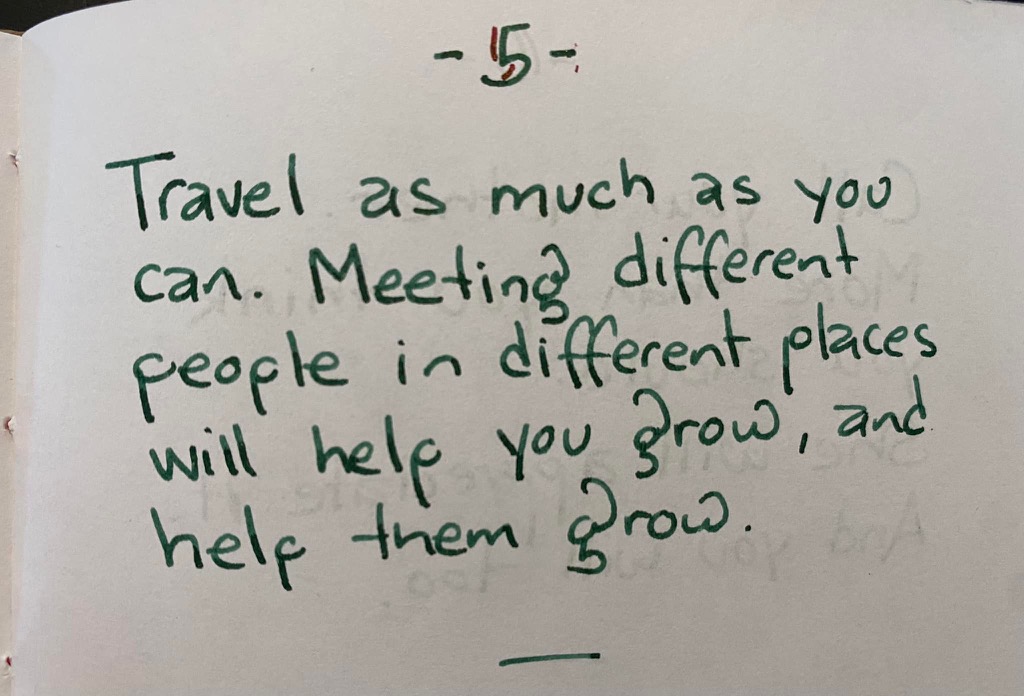
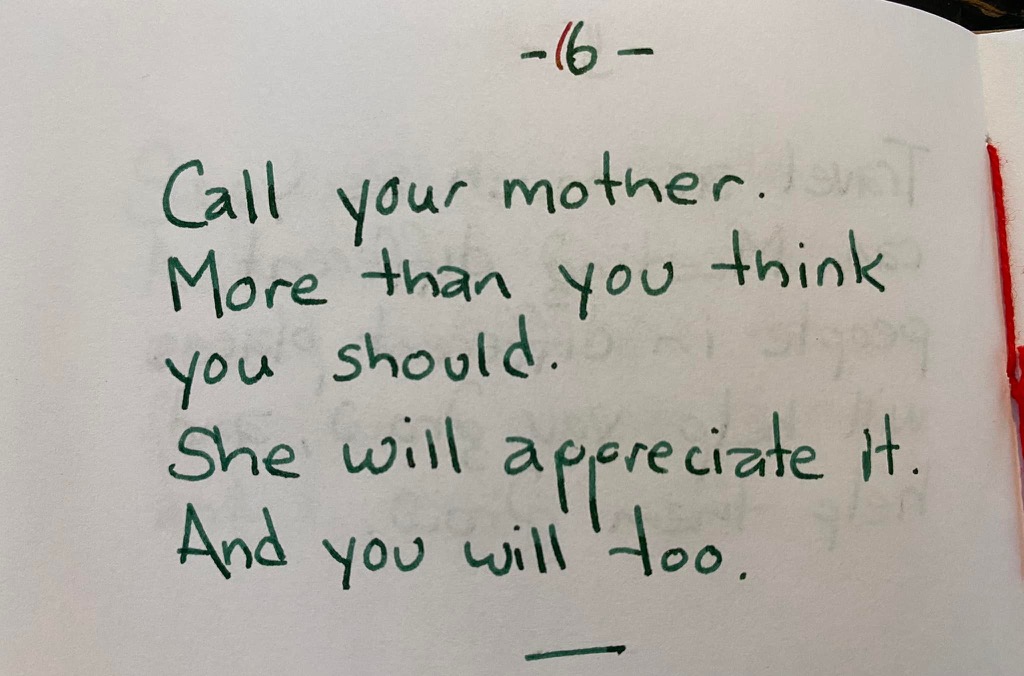
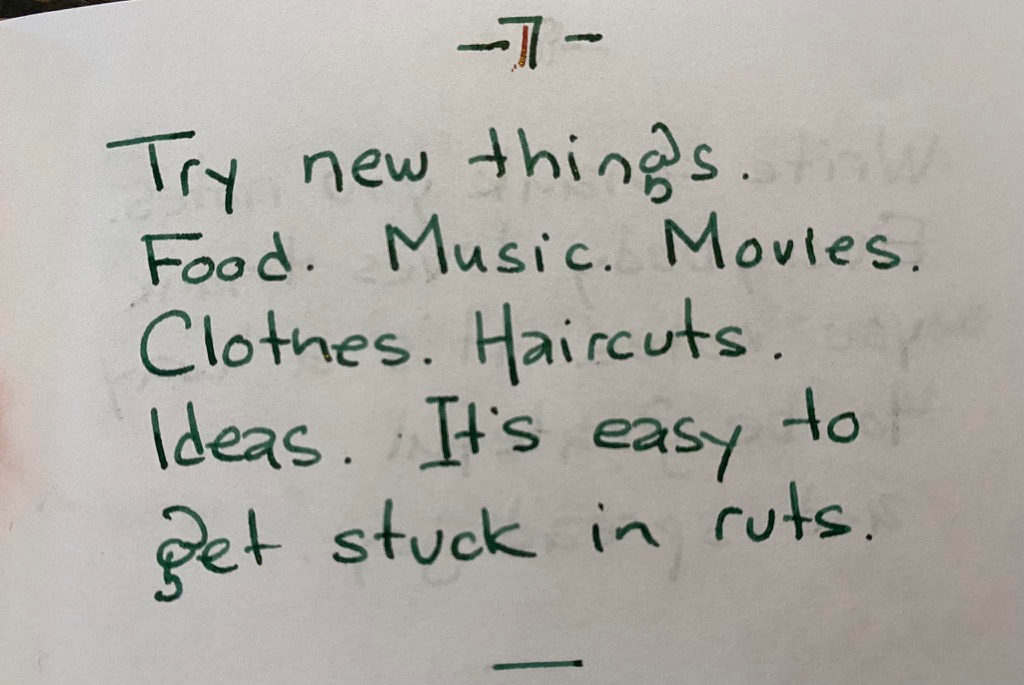
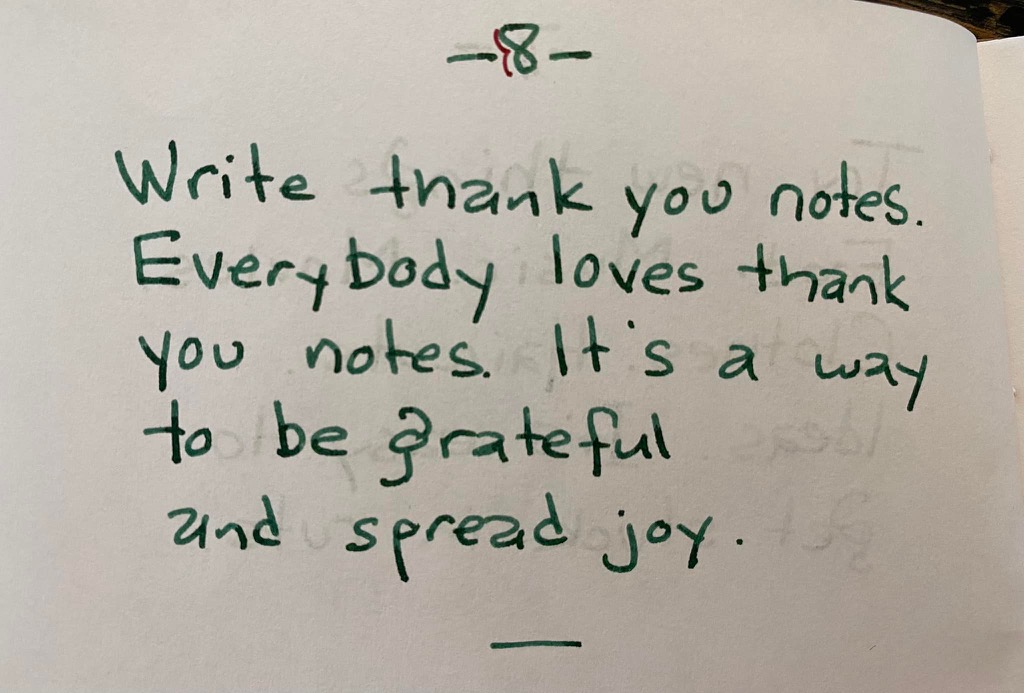
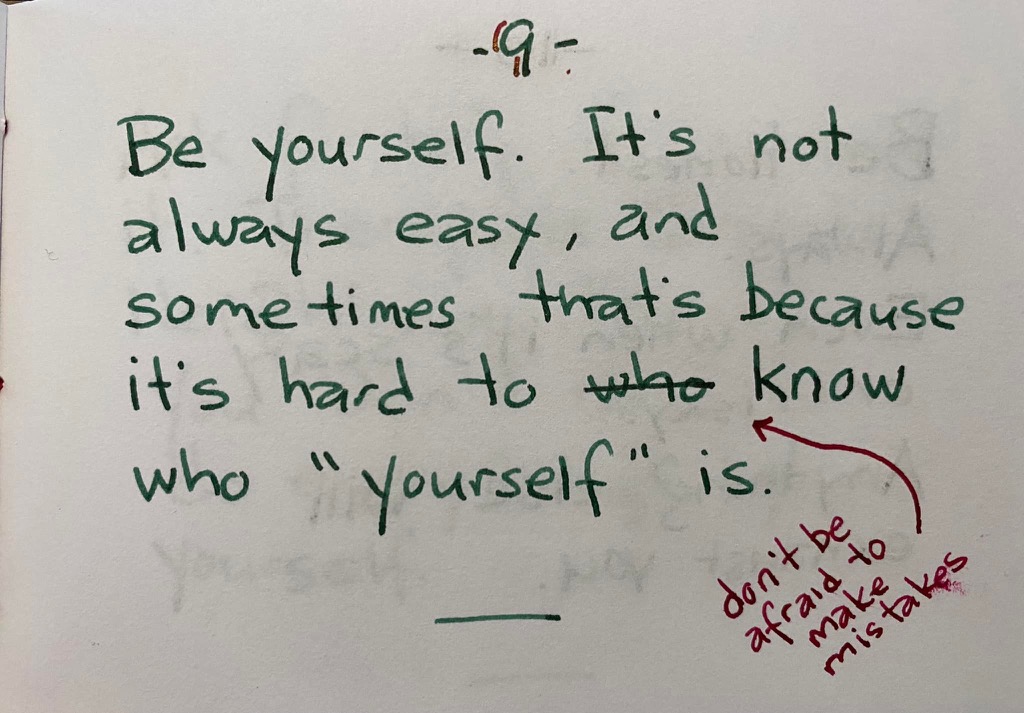
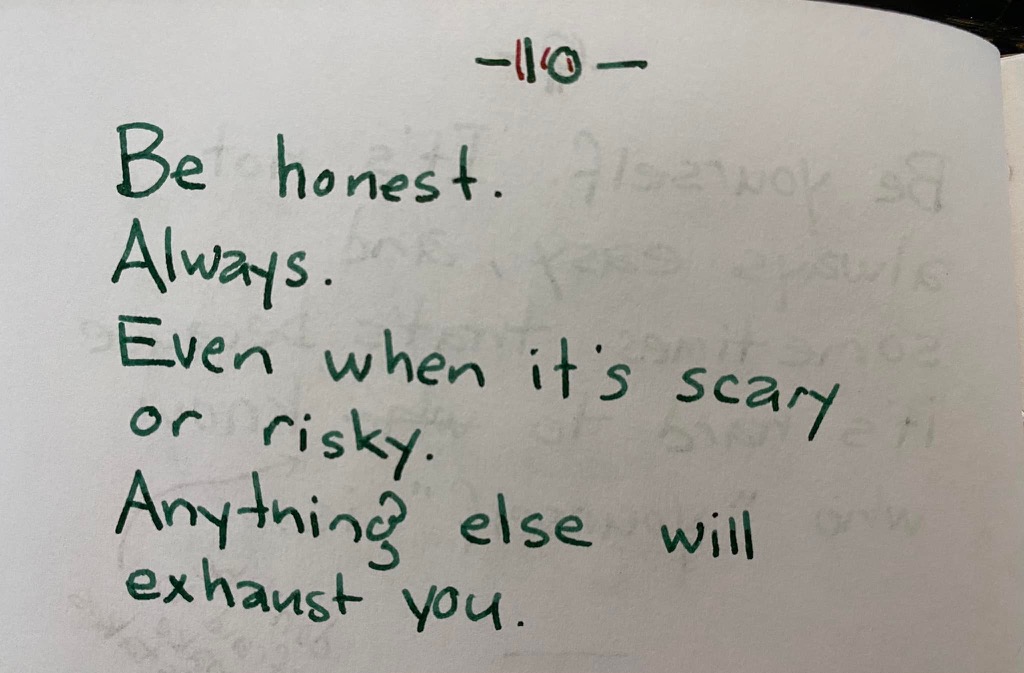
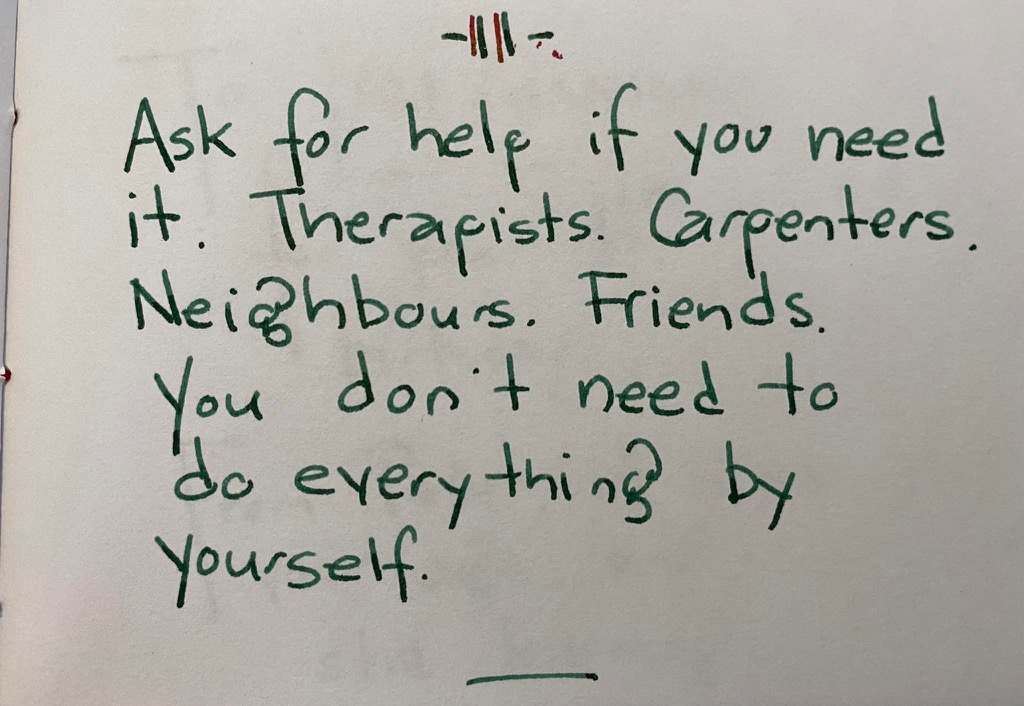
Prince Edward Island has a fleet of electric school buses, one of which stops near our house every afternoon.
I swore that the sound effect the bus emits was the same as the the Montréal métro’s dou dou dou sound, so I called the company.
It is!
It is disconcerting to hear the métro doors closing outside my house, especially when waking up from a nap.
I was saddened to learn of the death of my longtime neighbour Dorothy Forsythe last weekend.
When we moved into 100 Prince Street, we became neighbours to Dorothy and her late husband Bob at 108 Prince Street. We’ve benefited from good and generous neighbours all-round, and Bob and Dorothy were certainly that: helpful, caring, supportive. Dorothy was a great friend to Catherine over the years on many fronts, and to me especially after Catherine’s death.
I will never forget running into Dorothy and Bob at the Charlottetown Farmers’ Market one Saturday some years ago and finding them excited by the impending visit of their nephew. I asked what their plans were: perhaps they’d go to Rainbow Valley with him, or Sandspit, or the beach? “Well,” replied Dorothy, “he’s in his 50s and he’s a lawyer…” It was easy to forget they were several generations older than me.
Earlier in COVID times, I started a newsletter for my neighbours in the C1A 4R4 postal code; Dorothy was an enthusiastic reader and, in the last issue, a contributor: she wrote a piece about her home at 108 Prince Street, and her lifetime association with the house:
108 Prince St., where I live, was built in 1878 as a single home by M.P. Hogan. The builder lived here for four years until it was sold to W.W. Wellner, a well known Charlottetown jeweller.
In 1913 it was bought at auction by my grandfather, John Bell Andrew, who owned a farm and carding and grist mill, “Belmont Mills” at East Royalty.
My grandparents never lived on Prince Street and it was rented to a large family. There were eight bedrooms, some with sinks. The depression years followed and the house needed extensive repairs and often the tenant wasn’t able to pay the rent.
In 1914 World War One began and in 1915 my father enlisted at seventeen. He was wounded three times, the last time only three days before the armistice. As he was recovering in England after the war he got the Spanish flu and was very ill. Now we can identify with what was like then!
In 1940 my dad, Frederick L. Andrew, reenlisted and his first posting was to organize an army Basic Training Centre at Beach Grove. It had been a summer hotel owned by the Sterns family. The hotel was used as a barracks and many more army buildings were added. After the war the hotel became a nursing home until a new home was built on the same location.
Our home in East Royalty was sold and, at that time, my grandfather turned the house at 108 Prince St. over to my father. Dad immediately had renovations started: James Harris was the architect and Neil Blank was the contractor.
The apartments were ready to move into in the fall of 1942. I started grade VII at the old three-story brick school in the present Prince Street School location. I had previously attended the one room school in Central Royalty.
In January 1942 my father was transferred to Halifax to take command of № 6 District Depot where soldiers left by ships for overseas and returned home for discharge when the war ended. He was there until 1947 and during that time Mother and I were living at 108 Prince Street.
Mother and Dad lived the rest of their lives here and my husband Bob and myself moved here from Saint John in 1984. Bob died in 2014 and I’m still here at age 90.
I’m very grateful to have great neighbours keeping an eye out for me.
In the fall of 2018 we helped Olivia organize an epic 18th birthday party for herself, so epic that we needed to rent the St. Paul’s Parish Hall to host it. Dorothy was there, and at the end of the night, with only a few stragglers left, it was Dorothy who grabbed a broom and swept the floor, something captured by the livestream camera:
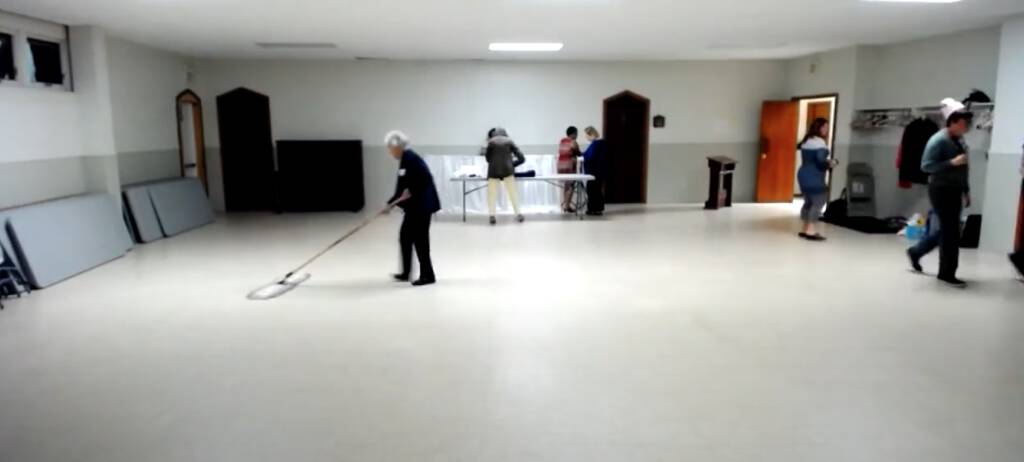
The generosity of spirit in that act is how I will forever remember Dorothy: a kind-hearted, curious, engaged woman. A great neighbour.
She will be missed.
We held a birthday party for my mother last night. Looking over the photos of the night, I see that everyone is smiling.
It’s nice to see smiling; it’s been a long time since conditions, griefy, COVIDy, and otherwise, have allowed space for that, but we got here, together.
Gathering the people I love around a table to share a meal has seldom felt so wonderful.
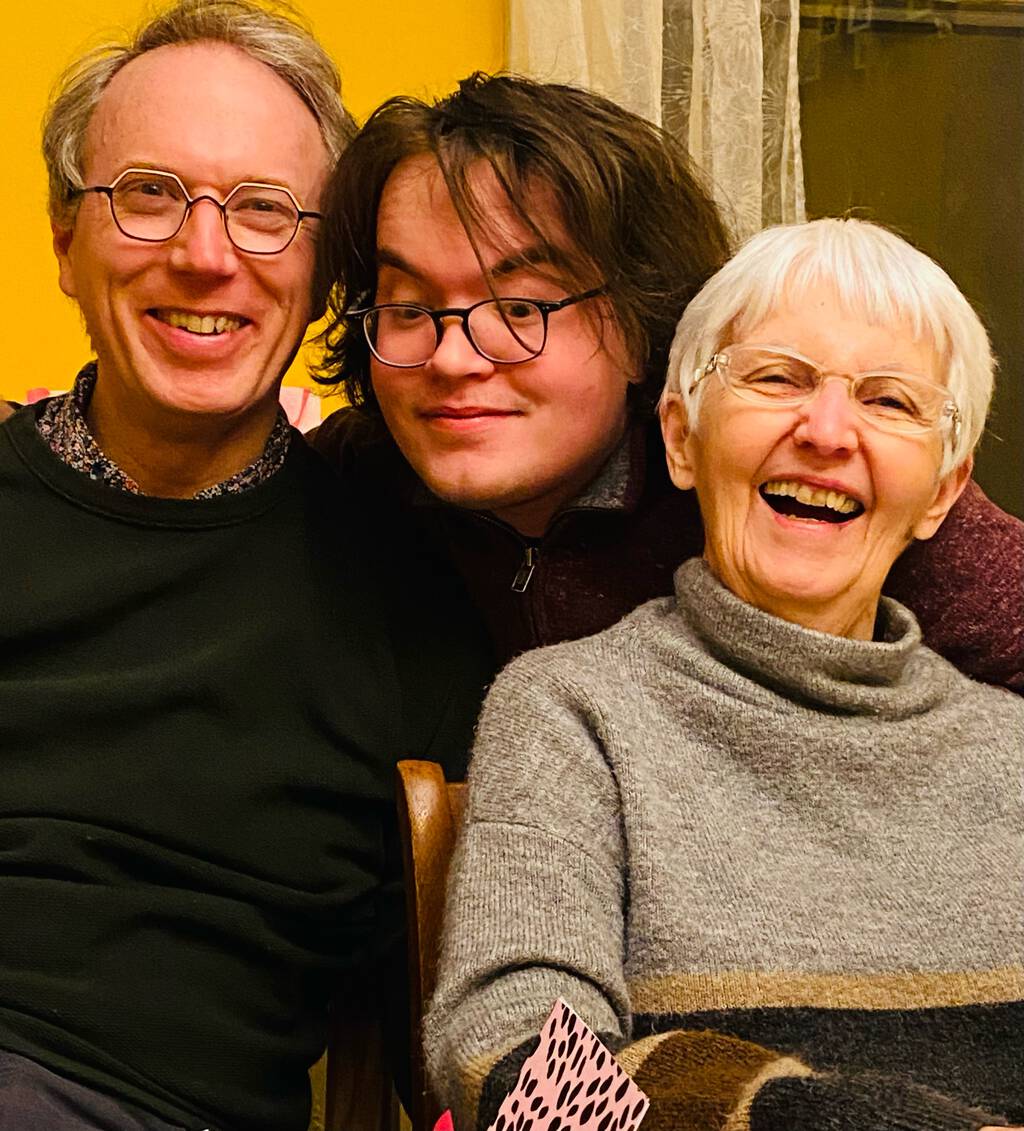
I have been thinking a lot about happiness, and about family and relationships, and about writing.
Regular readers will recognize that I haven’t been writing as much here of late, and that’s been due a number of things, primarily time and license.
The time thing is easy to explain: since the beginning of December I’ve been inside a new relationship, something that’s captivated me deeply, and filled my hours with togetherness, coupled and familial.
The license thing is a different but related beast: this blog isn’t a confessional, but it’s also not not a place where I write about my life, my feelings, my challenges, my projects. I made my way through Catherine’s illness, and death, and the grief that followed, in no small way, by writing here. I’ve written here about autism, and mental health, and the challenges of parenting.
But what of the new people in my life?
This is trickier.
Privacy for all concerned.
The challenging forces of public vulnerability shining bright on a fragile, newly-hatched thing.
Fear of writing, in full view of people who loved Catherine deeply, about my feelings for someone else.
Fear of writing about forces mysterious; I’m much more comfortable writing of the concrete.
These, and other things more deeply-seated, have me skittish about writing in public about my life these days.
And yet writing is so important to me: this practice has been integral to the way I process things. And as much as I’m skittish about writing about everything new and delightful, I’m also aware that not doing so leaves a dark ages in that process; I need to have a way to helpfully kerfuffle things through my brain, and I’m learning what happens when I don’t have that.
Here’s a goofball selfie I took this morning. My tousled hair! The smile on my face! I’m wearing a T-shirt! I don’t recognize this fellow, and I’d like to learn more about him. The way to do that has to run through a jungle of words; it’s just how I work.
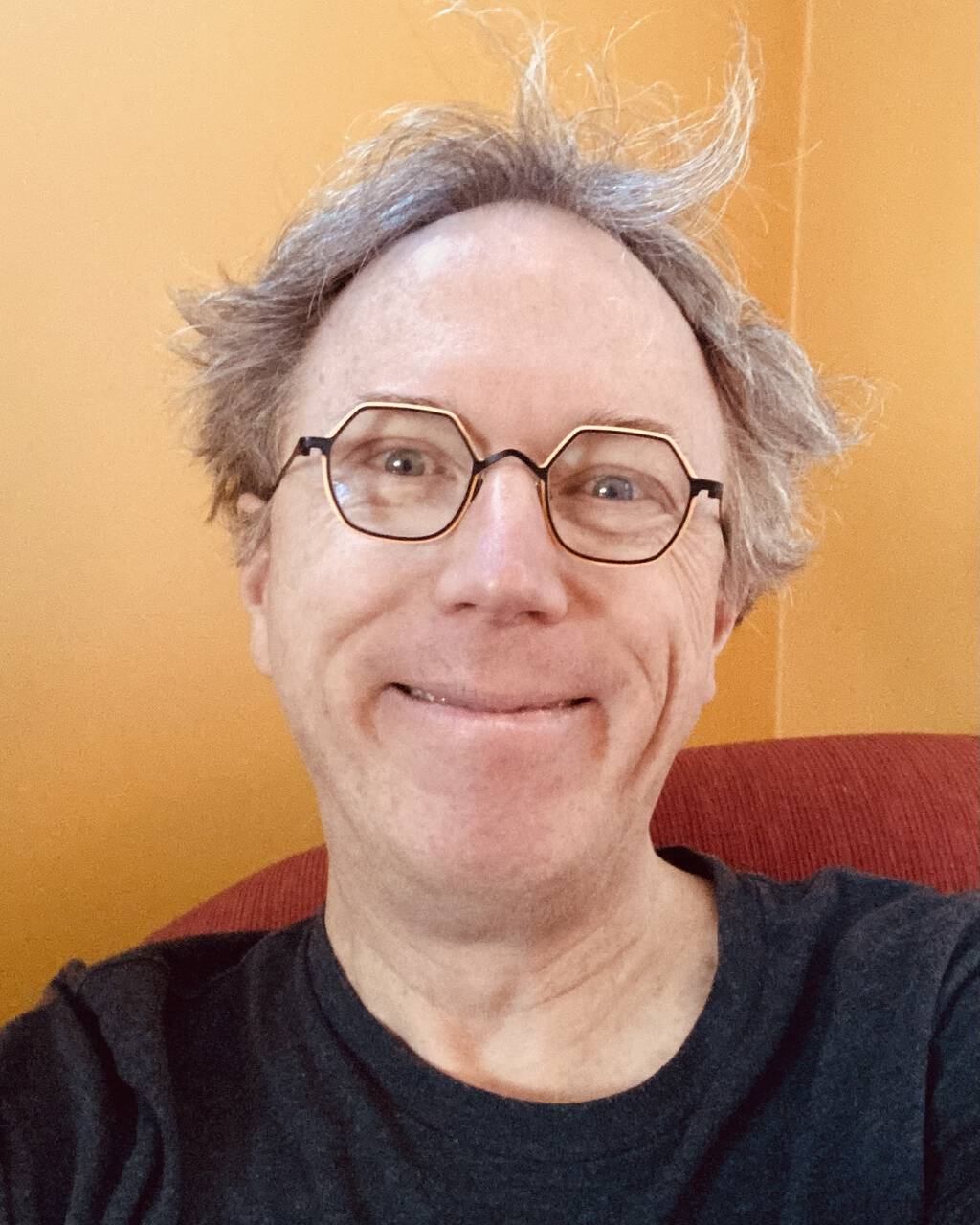
I’ve confronted this notion before, most recently when considering how to write about Olivia’s transition to identifying as a trans-woman. The challenges and joys this has brought with it, the things I’ve learned, the new friends and allies I’ve made, are all things I could have written about here but didn’t: this wasn’t, isn’t, my story, it’s hers. And yet, as with autism, it’s also something I’m involved with, affected by, supportive of. Surely that’s something I could be writing about, if only because there’s almost no writing about life supporting an autistic trans daughter, which can make one feel really, really alone.
And there is a similar additional reason for me to write about my romantic exploits, and that’s that there’s so little that’s helpful when one Googles “widower dating mid-50s.” And yet so much that one wants to know as a widower in ones mid-50s thinking they might date (most of what is written is of the “10 reasons you don’t want to date a widower” variety, which is unhelpful).
I know from experience writing about the travails of cancer caregiving, about grief, about parenting, that writing is purgative for me and, by times, helpful to others; I’m a man in my mid-50s who, through a lot of work, patience, creativity, determination, and luck, finds himself in the arms of a delightful woman. To know that such a tale is possible would have been a great salve to the mired-in-grief version of me, and, I presume to others. “There is hope, younger Pete,” I want to write back into time.
So, I will keep writing. I will need to figure out a new way of doing so, one that allows me to be honest, to tell my story, while at the same time figuring out a way for the other voices around the table to be present, but not appropriated.
Tricky. But worth it.
In June of 2016, Catherine found herself in an appointment at the PEI Cancer Treatment Centre with Dr. Cipperly pinch-hitting for her regular oncologist. It happened to be his last appointment on his last day at his job, and we found him helpful, patient and kind. I wrote about the appointment in my book:
Sleep turned out to be a topic of discussion otherwise as well: Dr. Cipperly used the appointment as a general sort of cancer check-up in addition to reviewing the CT results. Catherine’s been exhausted for a long while, even more so in recent months. Her protests about her exhaustion to our family doctor, and to Dr. Champion, have gone unheeded, as though there are bigger fish to fry.
We’d been working under the assumption (read “I’d been working under the assumption”) that this was simply a side- effect of living with cancer. It turns out, in fact, that cancer, in and of itself, unless some major energy-involved organ like the lungs is under attack, doesn’t exhaust you.
And so, being a guy with answers to questions, Dr. Cipperly rhymed off the list of things that can make you exhausted: anemia (Catherine’s okay here), thyroid issues (she’ll get tested before her next visit), blood sugar issues (another test) and sleep apnea.
Dr. Cipperly wasn’t sure that he had the power to refer someone to the sleep clinic, but as it was a slow afternoon and no nurses were guarding the forms, he grabbed one and made a referral. So, with luck, Catherine will be seen by the sleep lab and they may trace her exhaustion issues back to something that has nothing at all to do with cancer. Which would be terrific, inasmuch as it would be something treatable. Catherine would love to not be exhausted all the time.
Catherine did go on to get a sleep study, and was diagnosed with sleep apnea. We bought a CPAP machine for her, and it proved an excellent investment, as her sleep immediately improved. She used the machine until she died, carting it to Spain and back with her because she couldn’t imagine sleeping without it.
CPAP machines are expensive and aren’t covered by public health insurance; we had to dig deep. To help those that can’t afford a machine, the PEI Lung Association has a refurbishment program:
The PEI Lung Association is actively looking for pre-owned CPAP and BiPAP machines. An increasing number of Islanders are being diagnosed with sleep apnea—a condition that causes people to stop breathing when they sleep. This condition can cause a host of other health problems including heart arrhythmia, diabetes, stroke, depression and more. Therapy can be very expensive, with CPAP and BiPAP machines ranging in cost from $1,000 to $5,000 - and many Islanders cannot afford them.
Students from Dalhousie University’s School of Health Sciences work to refurbish the machines for distribution to patients who could not otherwise afford therapy.
If you or someone you know has a CPAP or BiPAP machine you no longer use, please consider donating it today! Ask us about tax receipts for newer-model machines! To donate a CPAP or BiPAP machine, or to donate another respiratory machine (e.g. pre-owned nebulizer or oxygen concentrator), please contact Julia Hartley at peilungassociation@gmail.com or by phone at (902) 892-5957 or at our toll-free number (888-566-5864).
Having seen how profound an improvement having a CPAP machine was to Catherine, I’m delighted to see this program in place; it was the destination for her machine after she died, and I’m happy it’s found a new life helping someone else.
 I am
I am